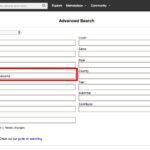For pedal steel guitar players, maintaining consistent tuning across all strings and pedals is paramount. However, a common phenomenon known as “cabinet drop” can disrupt this delicate balance. Often referred to by some players as a “Drop Guitar Pedal” issue, this occurs when certain strings, particularly non-pulled strings, unintentionally go flat when other pedals or strings are engaged. Let’s delve into what cabinet drop is, its potential causes, and what can be done about it.
Cabinet drop is most noticeably observed on the E9th tuning, a standard tuning for pedal steel guitars. A prime example is the 6th string. When the A pedal is activated, the 6th string will often go slightly flat on many pedal steel guitars (PSGs). The degree of this flatness can vary significantly from one guitar to another. Similarly, the 4th string can also experience cabinet drop when the A and/or B pedals are engaged. This issue isn’t limited to just these strings and pedal combinations; it can manifest in various ways across the instrument.
Several guitar manufacturers have recognized this problem and developed modifications aimed at mitigating or eliminating cabinet drop. Emmons Guitars, with their LeGrande III model, is one such manufacturer. Their modification is reported to effectively stop cabinet drop, achieving zero drop when properly adjusted, even when tested with a highly sensitive needle tuner. Excel Guitars in their SuperB models and Remington Pedal Steel Guitars are also known to have implemented modifications to address this issue. While anecdotal evidence suggests these modifications are effective, direct testing and comparison are always recommended to confirm their performance. It’s also worth noting that some pedal steel guitar models are reputed to be inherently free from cabinet drop. The Anapeg, Carter, and newer MSA Millennium guitars are often cited in this regard, as are vintage Fender pedal steel guitars. However, verifying these claims requires careful testing and observation.
One prevailing theory attributes cabinet drop to the physical mechanics of the pedal steel guitar cabinet itself. The idea is that engaging pedals might exert a downward pull on the cabinet. This force could cause the cabinet to bow slightly, effectively shortening the distance between the changer (the mechanism that raises and lowers the strings) and the nut. This change in string length under tension is then believed to cause the non-pulled strings to go flat. While this “cabinet bowing” theory is plausible and likely contributes to cabinet drop in some instances, it doesn’t fully explain the phenomenon in all cases. It’s been demonstrated that cabinet drop can occur even when cabinet bowing is not the primary factor. A simple test involves engaging the F knee lever and observing the 6th string. If the 6th string goes flat when only the F knee lever is used, this drop cannot be attributed to pedals pulling down on the cabinet, as the F lever mechanism typically doesn’t exert downward pressure in the same way as the pedals.
The exact root causes of cabinet drop remain somewhat debated and unproven. Various theories exist, but a definitive, universally accepted explanation is still elusive. What is clear is that cabinet drop is a real and often frustrating problem for pedal steel players, and its severity varies across different instruments. For players experiencing significant cabinet drop on the 6th string, a temporary workaround involves adding a raise rod to the A pedal to compensate for the drop by pulling the string back up to pitch. Some players adopt this quick fix, while many others learn to live with and adjust for cabinet drop as part of their playing technique.
Interestingly, there’s also a lesser-discussed counterpart to cabinet drop known as “cabinet raise.” Cabinet raise is the opposite effect, where a non-pulled string slightly sharpens in pitch when another pedal or lever is engaged. Using the 6th string again as an example, engaging the E lever (which lowers the E notes) can sometimes cause this string to raise slightly in pitch. This phenomenon prompts the question: is the cabinet itself also capable of “raising” under certain mechanical actions?
The late Ron Lashley, a respected figure in pedal steel guitar design, offered insightful perspectives on cabinet drop. He stated that there are multiple causes for cabinet drop, emphasizing that it’s not a single, simple issue. Lashley claimed to understand the underlying causes and designed the Emmons LeGrande III specifically to address and eliminate cabinet drop, a claim that has been largely validated by users. However, he remained guarded about revealing the exact mechanisms he identified as the culprits. Countering one popular theory, Lashley mentioned that on his early LeGrande models, he experimented with supporting the axle (a critical component in the changer mechanism) between each changer finger. Despite this modification, it did not resolve cabinet drop, suggesting that axle flexing, another potential theory, might not be the primary cause, or at least not the only one.
In conclusion, “cabinet drop,” or “drop guitar pedal” issues, are a complex and multifaceted problem in pedal steel guitars. While manufacturers have made strides in mitigating it, and various theories attempt to explain its causes, a complete understanding remains elusive. Players often navigate this issue through instrument modifications, playing techniques, or simply accepting it as a characteristic of their instrument.

